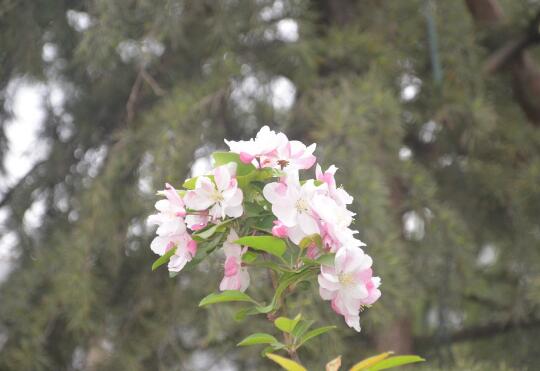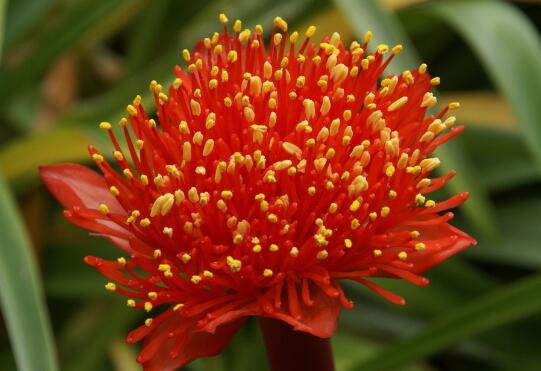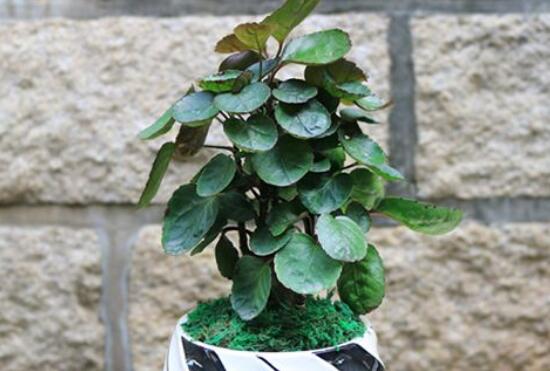What to do with the growth of Begonia flower insects? pest control of Begonia mandshurica / 3 insects and 2 diseases
When we cultivate Xifu Begonia, the last thing we want to encounter is diseases and insect pests. This kind of problem is very harmful to plants, which will not only affect their ornamental value, but also lead to plant death when it is serious. So what should we do if Xifu Begonia flowers grow insects? What do you need to do to control pests and diseases in Xifu Begonia? The following small series takes everyone to understand.
I. What should I do if the Begonia flower grows worms in Xifu? Find out the reason.

If you want to know what to do when the Xifu Begonia flower grows insects, first of all, we need to know what insects it grows, so that we can carry out targeted treatment on it, because the treatment methods of each pest are different. The specific details are described in detail below. Friends who have problems in this area can come to know about it.
II. Pest control of Begonia nigra
1. the beetle
Scarab is a soil-dwelling pest, which is a common pest among the pests of Malus hirsutus. This pest mainly feeds on the taproot and stem of Malus hirsutus. It will gradually eat the bottom of the plant, resulting in incomplete plant and death.
Control method: When dealing with this pest, we can spray 40% omethoate 1000 times solution on the soil, loosen the topsoil after spraying, so that the solution can penetrate better, and this pesticide will die when touched.
2. aphids
Aphids were a kind of plant-feeding insect. They were very destructive to the West Mansion Begonia. They would attach to the back of the leaves of the plant and gradually suck the juice from them, causing a large loss of nutrients from the plant. The leaves would slowly turn yellow and dry up. In severe cases, they would also cause the plant to die.
Control methods: aphid is a plant with strong reproductive ability, so we must control it in time when we find it. The most direct way to deal with this pest is to spray it directly with 50% aphimid-resistant WP 3000 times.
3. red spider
Red spider, also known as cotton spider, is a pest of Tetranychus family. The size of this pest is very small and it is generally difficult to find. Its harm way is to pierce the leaves with mouthparts to suck the juice, which leads to the destruction of chlorophyll and yellowing phenomenon, and in serious cases, it will also lead to leaf shedding or even light loss.
Control method: When dealing with this kind of disease and insect pest of Xifu Begonia, if only individual leaves are injured, we can remove them. If more leaves are injured, we can use 40% dimethoate emulsifiable solution 1500 times to spray on the plants to eliminate this pest once.
4. white star disease
White star disease mainly threatens the leaves of Malus xifuensis. Many dark brown spots will appear on the leaves when the disease occurs, and then the periphery will be dark brown and the center will be gray. This disease mostly occurs on the lower leaves, and when it is serious, the leaves will also appear curly and dry.
Control methods: For this kind of disease and insect pests of Xifu Begonia, we can use 75% chlorothalonil wettable powder 500-800 times to spray the diseased plants, generally every half month or so, 1-2 times after it can be cured.
5. canker
Rot disease is a disease caused by fungi, which can infect young seedlings and attack in flowering stage. It can occur on flowers, fruits, leaves and stems of Malus hirsutus. If this disease is not treated in time, it will lead to gradual withering and death of plants.
Control method: When we deal with this kind of disease and insect pests of Xifu Begonia, we can use 40% Pythium WP 15- 20g to apply medicine to the diseased plants, usually once every 3-5 days, 2-3 times later, it can be cured.
How to breed Xifu Begonia, Xifu Begonia flower propagation method/sowing/raiding/grafting
Xifu begonia is a kind of flower plant with high ornamental value. Many people are breeding it in various provinces of our country. With the number of people breeding it, the problem of its reproduction has also aroused people's concern. How does Xifu begonia reproduce? What are the breeding methods of Xifu Begonia flower? The following small series takes everyone to understand.
1. How to breed Xifu Begonia, sow/divide plants/graft
When it comes to how to reproduce Xifu Begonia, it is mainly divided into three methods: sowing, branching and grafting. As long as we operate properly and the process is careful enough, all three methods have a high survival rate. As for the specific details of the three breeding methods, there are detailed introductions below. Let's take a look at them.
2. Propagation method of Xifu begonia flower
seed reproduction
Seed Stimulation: Before we sow and reproduce the Xifu Begonia, there is a pre-treatment to be done, that is, the seeds need to be stimulated. First, we can soak its seeds in warm water for 12-24 hours, and then wait until the seeds begin to absorb water and swell, and then take them out for sowing, which can make the seeds germinate faster.
Sowing method: before sowing, we should first apply appropriate amount of base fertilizer in the soil, and then sow the seeds of Xifu Begonia evenly on the soil surface. After sowing, cover 1-2cm of soil on it and water it. It is best to use dipping pot method when watering, because its seed volume is small, and it is easy to wash away the seeds if watering directly from above.
division propagation
When we carry out plant division propagation of Xifu Begonia, we can combine it with pot change, and the time can be selected in spring. When dividing plants, we should take out the mother plants that grow too densely from the pot soil, and then divide them into several clusters, which are respectively potted and planted with them. It is easy to survive. Generally, after the pot is a complete pot of flowers.
grafting propagation
Grafting propagation is mainly suitable for fine varieties of Xifu Malus, we can select their branches as scions, and then cut and split in spring, and abut in the growing season. The grafting method can be carried out according to the grafting method of general woody plants.
Begonia flower: Xifu Begonia, Xifu Begonia picture
Most Chinese have heard of Begonia flowers, and Xifu Begonia is one of them. Xifu Begonia is a apple begonia, flowers usually have some fragrance when they first bloom. Before the flowers bloom, the buds are red, like rouge, and after they bloom, they gradually turn pink, like the dawn. Xifu Begonia flower shape larger, four to seven clusters blossoming upward, very beautiful. Below we will learn more about the knowledge of Xifu Begonia and see the real Xifu Begonia pictures.
Begonia Flower West House Begonia
[Plant Archives]----------------------------------------------
Chinese Name: Xifu Begonia
Name: Malus micromalus
Other names: Haihong (Compendium of Materia Medica), Xiaoguo Begonia (Annals of Economic Plants in North China), Zizi Begonia (Hebei Native Name)
Family: Rosaceae
Category: Apple Malus
Origin: Yunnan, Gansu, Shaanxi, Shandong, Shanxi, Hebei, Liaoning, etc. in the mainland of China. It grows at an altitude of 100 meters to 2, 400 meters. It has been introduced and cultivated artificially.
Description: Deciduous trees, up to 8 m tall; branchlets cylindrical, erect, reddish brown when young, pubescent when old, dark brown, glabrous; leaf blade elliptic to long elliptic, margin serrulate. Inflorescences subumbellate, 5-8-flowered; pedicels thin, 2-3 cm long; flowers 4-5 cm in diam.; petals ovate, shortly clawed at base, 2-2.3 cm long, white, pink to red at initial opening; fruits subglobose, 1.5-2 cm in diam., yellow. Flowering April-May, fruiting September.
1----------------------------------------------------------
Because of the colorful, generally more cultivated in the garden for greening. The imperial gardens of the Forbidden City and the Summer Palace in Beijing are planted with crabapple trees. At the turn of spring and summer, the flowers stand upright in the wind. The flowers are bright and moving, and the scenery of the famous gardens is enriched. Together with magnolia, peony and osmanthus, they form the artistic conception of "Yutang Wealth". Xifu Begonia fruit yellow with red, sweet and sour taste, taste like hawthorn, can be fresh or preserved fruit production, more planted in northern China.
Begonia flower buds in spring rain
Delightful Xifu Begonia Flower
Petal morphology of Malus xifuensis
2. Cultivation techniques of Xifu Begonia----------------------------------------------
Xifu Begonia likes sunny, fertile and humid environment, cold tolerance, fear of drought and waterlogging; do not choose soil, but too much fertilizer and water, plant easy to grow, flowering reduced, affecting the ornamental value. In order to make Xifu Begonia flower colorful and beautiful, we need to adopt:
① Timely pruning: pruning too dense and thin branches, dead branches and diseased branches before germination in early spring every year, which is beneficial to ventilation and light transmission, promotes growth and flowering, and reduces the occurrence of diseases and insect pests; for old plants, old branches shall be renewed, and the upper ends of large branches with few branches shall be cut off with sharp saws in grass spring. After germination of new branches, several strong branches shall be selected, and thin and weak branches shall be cut off, and flowers shall be allowed after 1 year of cultivation.
② Fertilizer and water management: planting before germination of early spring buds, applying decomposed organic fertilizer before planting. After falling leaves every autumn, dig ditches in the rhizosphere and apply decomposed organic fertilizer, and irrigate thoroughly after covering soil. Adult plants should not be watered more, more water easy to produce yellow leaves. Generally, water is poured 2-3 times in spring, 1-2 times in summer and autumn, and 1 time in winter.
③ Timely fruit picking: young fruits should be picked in time after flowering, saving nutrients and increasing the number of flowering in the coming year.
④ Disease and pest control: Xifu Begonia is vulnerable to aphids, red spiders, scale insects, longicorn and other pests, so it is necessary to spray timely for control.
Xifu Begonia Fruit
Potted culture of Malus xifuensis
"Conclusion: After reading the text and pictures in this article, I wonder if everyone knows more about Xifu Begonia? Friends in the north may wish to observe more of the Xifu Begonia around them, take some good-looking pictures of Xifu Begonia, and share them with more people who want to know Xifu Begonia!
- Prev

What to do when tennis flowers grow worms? pest control of tennis flowers / 2 insect pests 2 diseases
In the process of cultivating tennis flowers, the last thing we want to encounter is diseases and insect pests, this kind of problem is very harmful to the plant, which will not only affect the beauty of the plant type, but also lead to plant death. So what should I do if there is a bug in tennis? How to prevent and control diseases and insect pests of tennis flowers
- Next

What to do with the long bugs of Fulu tung? pest control of Fulutong / 2 insects and 2 diseases
Keeping a pot of green plants indoors is the choice of many people today, and Fulutong is loved by the majority of flower friends because of its large and green leaves. However, when cultivating flutong indoors, many flower lovers will encounter the phenomenon of long worms, so what about the long bugs? The following are several common diseases and insect pests of Fulutong
Related
- Fuxing push coffee new agricultural production and marketing class: lack of small-scale processing plants
- Jujube rice field leisure farm deep ploughing Yilan for five years to create a space for organic food and play
- Nongyu Farm-A trial of organic papaya for brave women with advanced technology
- Four points for attention in the prevention and control of diseases and insect pests of edible fungi
- How to add nutrient solution to Edible Fungi
- Is there any good way to control edible fungus mites?
- Open Inoculation Technology of Edible Fungi
- Is there any clever way to use fertilizer for edible fungus in winter?
- What agents are used to kill the pathogens of edible fungi in the mushroom shed?
- Rapid drying of Edible Fungi

